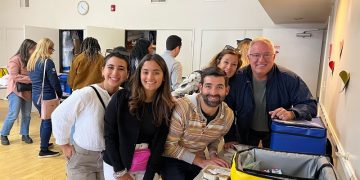By Tom Elias

The California ballot has seen plenty of dangerous propositions over the years, and yet another one may face voters wherever they cast votes next November.
Fortunately, virtually all such questionable proposals have been beaten at the polls or struck down by courts if voters acted irresponsibly. There was the AIDS quarantine measure put forward by crackpot presidential candidate Lyndon LaRouche in 1986, which aimed to place everyone with the disease in remote detention camps. Would Ervin “Magic” Johnson be part owner of the Los Angeles Dodgers and president of the Lakers today if that one had passed?
There was the 1994 Proposition 187, which sought to deprive undocumented immigrants of health care, schooling and anything else its sponsors could think of. That one passed handily, endorsed by then-Gov. Pete Wilson, but was swiftly struck down by a federal judge. And so on.
Now comes a danger of a different sort, embodied in a seemingly innocuous measure that’s about to begin circulating with hopes of getting a yes-or-no vote just over a year from now.
It’s titled “The California Call for a Constitutional Convention,” and it contains some fine ideas, including calls for Constitutional amendments to ensure equal pay for equal work and limit corporate “personhood” to invalidate the U.S. Supreme Court’s Citizens United decision. The initiative also calls for California to participate in a constitutional convention to push for creating a peaceful way for states to secede from the Union and/or negotiate treaties with foreign countries, and has a provision demanding that federal funding be distributed to states in proportion to what their taxpayers put into the federal kitty.
Most of those aims are laudable, but there’s absolutely nothing to guarantee that any of these ideas would attain reality if this measure passes. Rather, there’s the definite possibility for major alteration to the Bill of Rights, which now protects things like free speech, freedom of the press, freedom of association and guarantees there will be no official state religion.
How could this happen when the convention call includes very specific subjects to be taken up and none involves the Bill of Rights? Easy. Once you begin a constitutional convention, the delegates can take it where they like.
That’s one reason why even though many states have officially called for a convention to enshrine a balanced-budget amendment, that call has never gotten support from three-quarters of the states, as required to get a convention started.
There’s also little chance that even if California calls for a convention to take up its plentiful legitimate grievances, it will get the needed support from other states.
The sponsors of the new initiative, which goes by the abbreviated term CalConCon, in effect concede this. They maintain on their website (www.calconcon.com) that any convention call ever issued by a state – even 100 years ago or more – can be included in the total needed now.
That’s because just as the Constitution sets no limit on where delegates can take a convention, it also has no expiration date for convention calls, which now number 27. It’s an unfortunate omission by the Founding Fathers, who turn out to be fallible after all.
Marcus Ruiz Evans of Fresno, whose 2012 book California’s Next Century called for semi-sovereign status for the state and essentially began the Calexit secession movement that spawned this convention initiative, maintains there would be no “runaway convention.”
But the campaign website notes that “the U.S. Constitution makes no mention of rescinding an application (for a convention) or limiting (it) to a single subject…”
Still, says Ruiz, many academics have forecast a runaway convention would not happen. But how does anyone know where activists from Texas or Montana might take the meeting? Or whether there would be neo-Nazis and Ku Klux Klansmen among the voting delegates?
It’s true California several years ago called for a constitutional convention to get rid of the Citizens United decision. Fortunately, in part because of the dangers involved, no such meeting occurred.
Is it really worth risking free speech and freedom of religion or the right to bear arms for the unlikely possibility of winning the right to secede peacefully?
The only rational conclusion is that sponsors of this measure are being shortsighted, concerned more for their immediate goals than about making sure Americans’ fundamental rights remain untouched.












